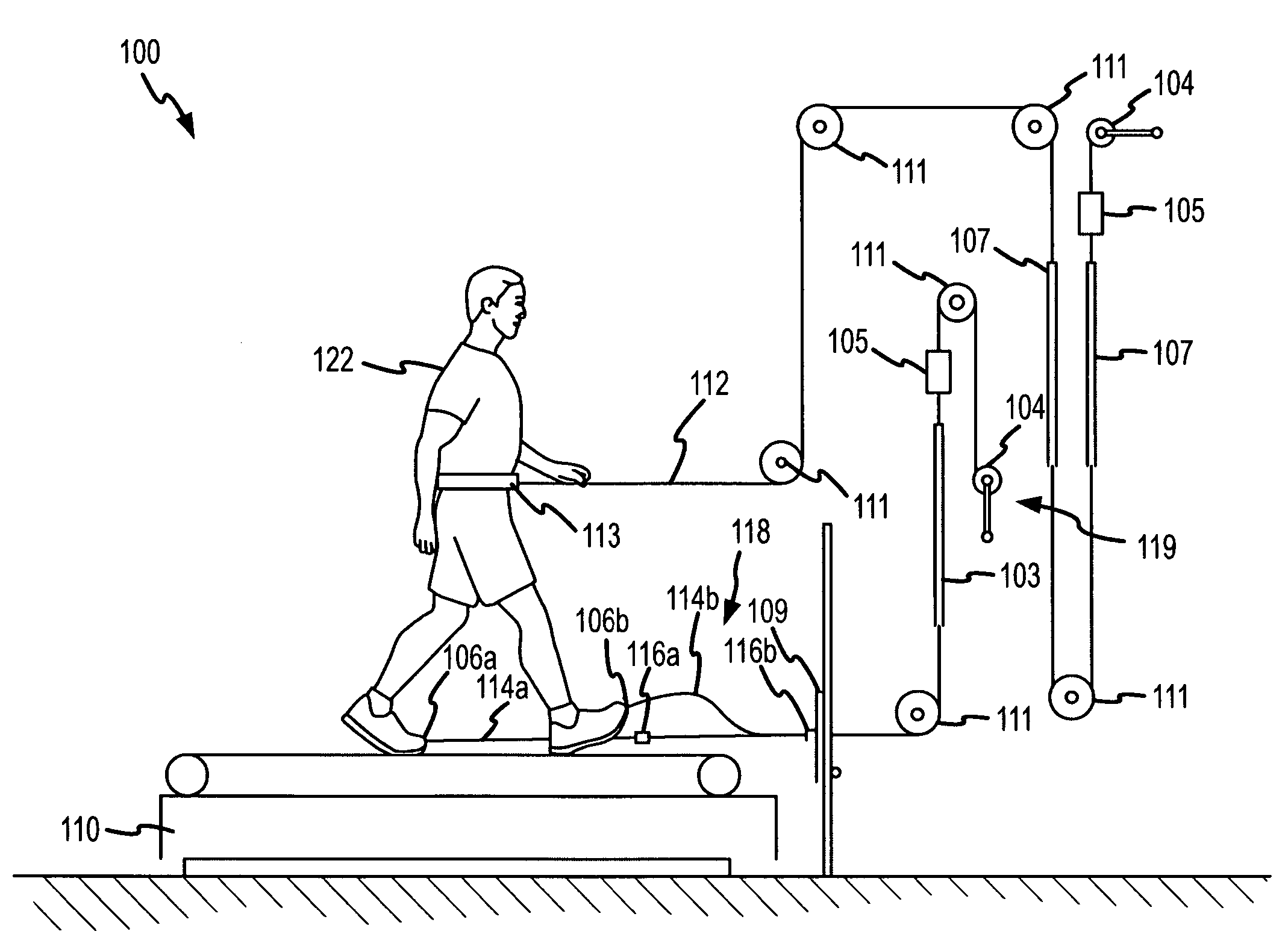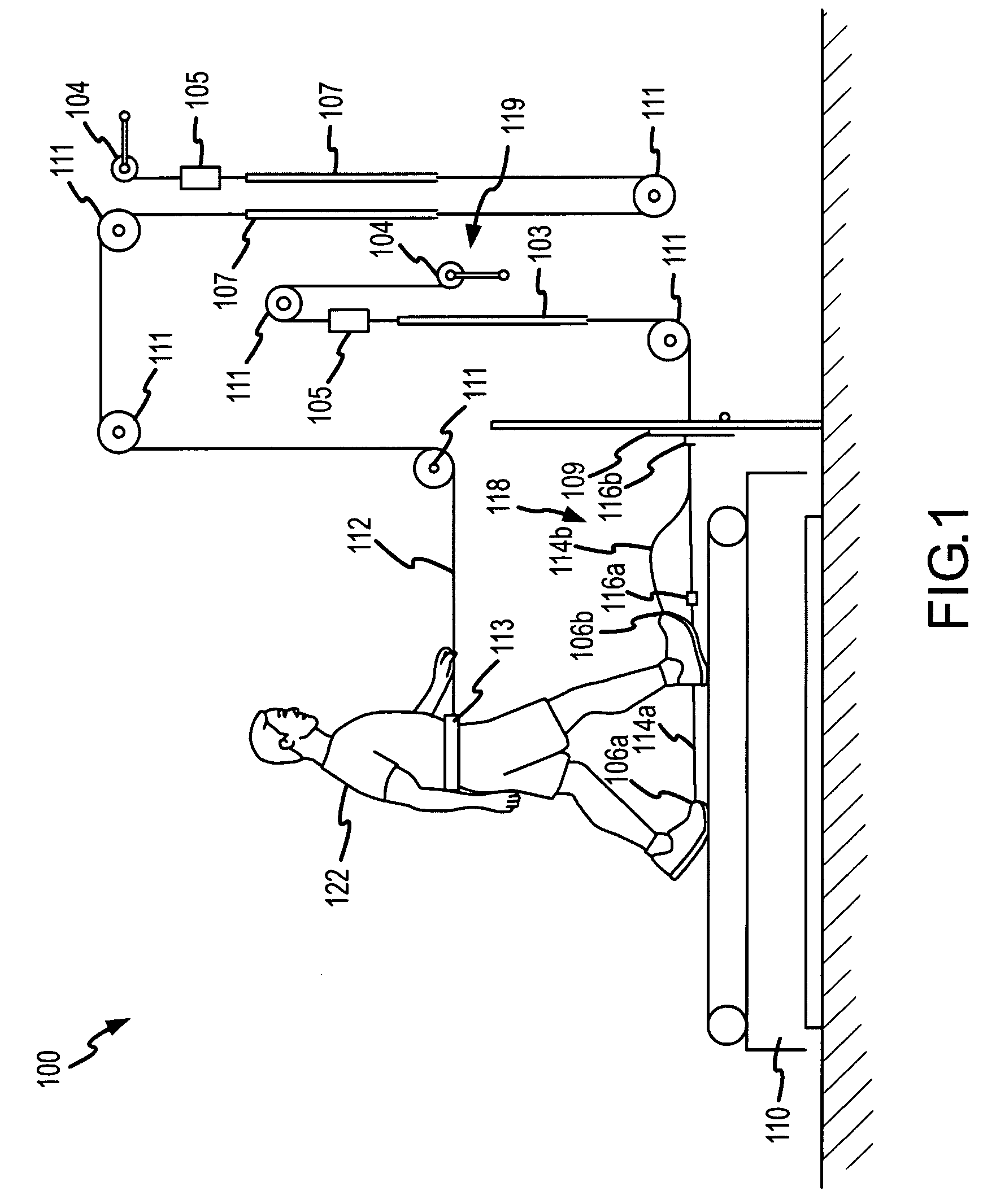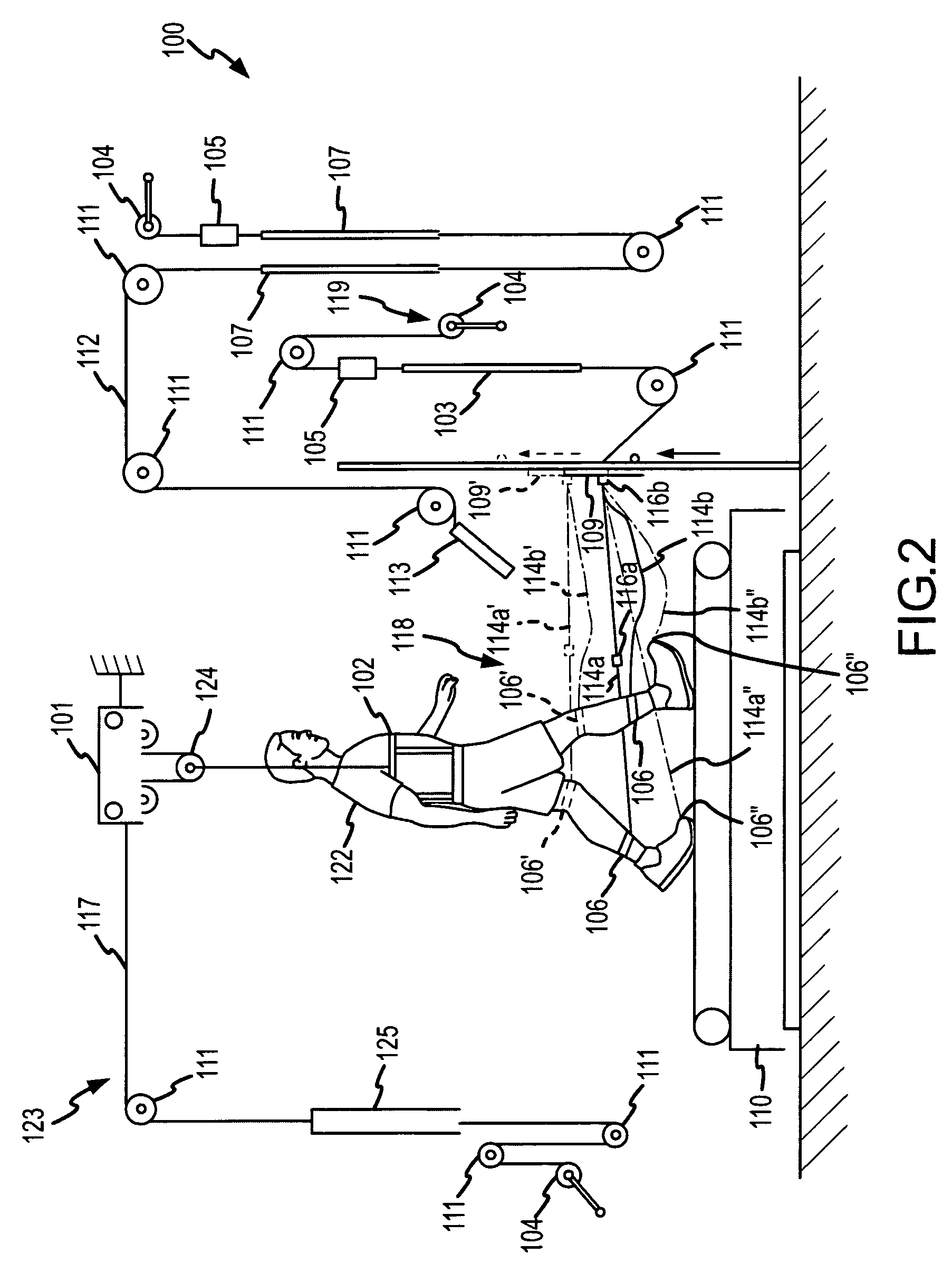Force assistance device for walking rehabilitation therapy
a technology of walking rehabilitation and assistance device, which is applied in the field of physical therapy devices for walking rehabilitation therapy, can solve the problems of manual leg manipulation, physical exertion of the therapist, and physical taxation of assisting with patient leg movemen
- Summary
- Abstract
- Description
- Claims
- Application Information
AI Technical Summary
Benefits of technology
Problems solved by technology
Method used
Image
Examples
Embodiment Construction
[0018]A physical therapy apparatus for use in conjunction with a treadmill provides an assistive force to a forward movement of the legs. A force assistance device is adapted to attach to the feet or legs of a patient positioned on a treadmill, which may be motorized, to assist in walking therapy. The force assistance device provides an assistive force to a forward movement of the patient's feet or legs. An adjustment device may vary an interface, for example, the height or direction, of attachment between the force assistance device and the patient's feet or legs. A force arresting device may arrest the assistive force provided by the force assistance device during the forward movement of the patient's feet or legs. The force assistance device provides a substantially constant assistance force during the forward movement of the patient's feet or legs. The force assistance device may also be adapted to provide a resistive force to the rearward movement of the patient's feet or legs ...
PUM
 Login to View More
Login to View More Abstract
Description
Claims
Application Information
 Login to View More
Login to View More - R&D
- Intellectual Property
- Life Sciences
- Materials
- Tech Scout
- Unparalleled Data Quality
- Higher Quality Content
- 60% Fewer Hallucinations
Browse by: Latest US Patents, China's latest patents, Technical Efficacy Thesaurus, Application Domain, Technology Topic, Popular Technical Reports.
© 2025 PatSnap. All rights reserved.Legal|Privacy policy|Modern Slavery Act Transparency Statement|Sitemap|About US| Contact US: help@patsnap.com



